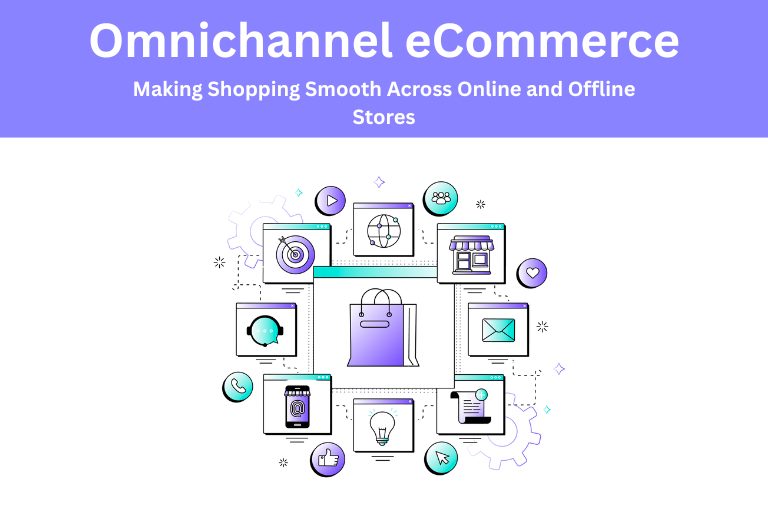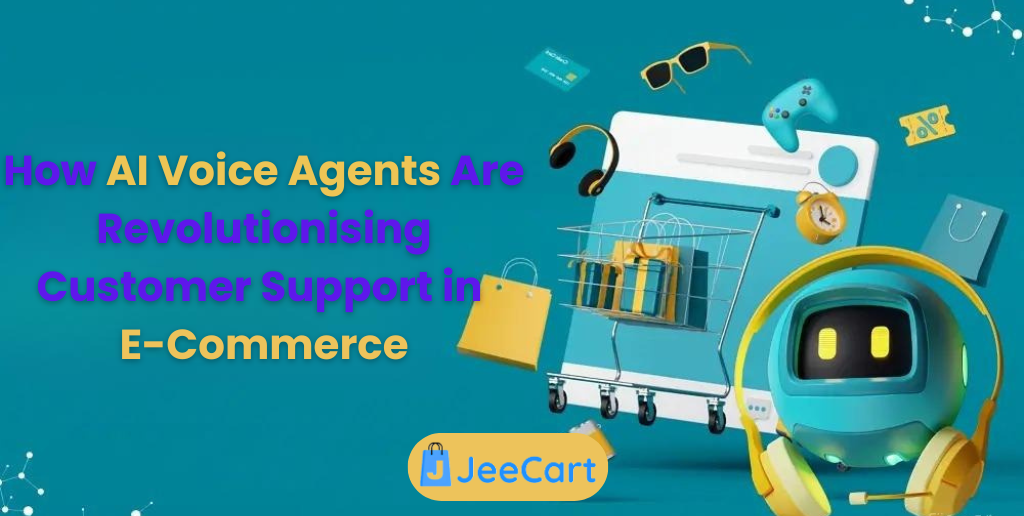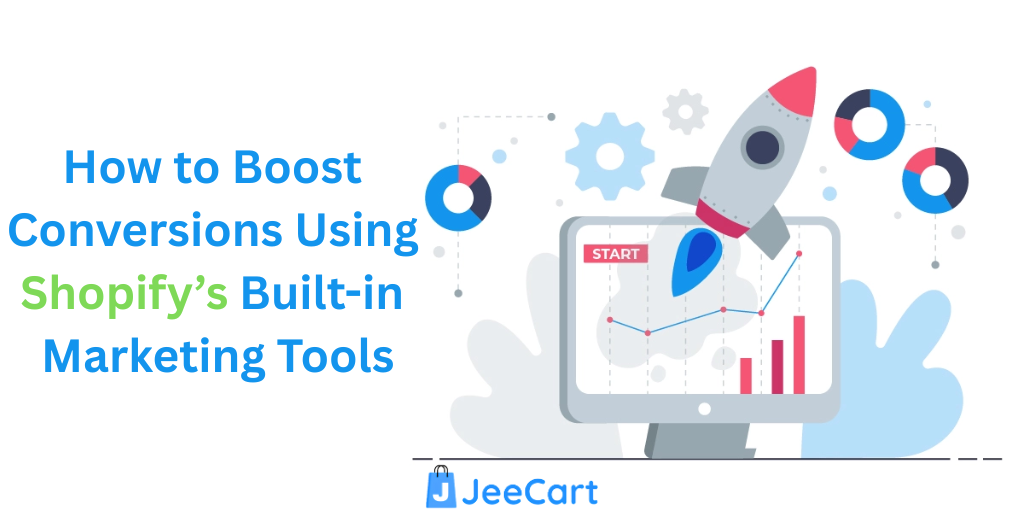
Today, the way individuals shop is drastically different from just a few years ago. Customers move seamlessly across digital and physical channels, often beginning their shopping experience online and concluding it in a physical store or vice versa. They may come across a product online via social media, research it on a website, check reviews comparing it on a marketplace, and complete the purchase at a physical store.
It is clear to businesses that customers no longer view the online and offline experiences as two separate experiences. Customers expect them to be linked and consistent.
Omnichannel eCommerce is the approach that integrates these experiences. It is all about the single seamless journey across the website, apps, social media, call centers, and physical stores.
Omnichannel strategies don’t remain focused on each channel; rather, they integrate each channel in the process, providing customers with the experience of working with one brand with any shopping experience they have, anytime and anywhere. This has become essential as we exist in a world where convenience and consistency drive customer satisfaction and retention.
Understanding Omnichannel eCommerce
Essentially, omnichannel eCommerce involves a connected experience. In a multichannel experience, which many retailers have focused on in the past, the retailer is simply present in multiple places. For example, a brand has a website, a place to shop offline, and a social media platform. However, often the multiple communication platforms do not communicate with each other, and the customer has to start over when they move to a different channel.
Omnichannel, on the other hand, connects these platforms. If you add a product to your cart on the website, you should still be able to access that cart from a mobile app or pick up that product in an offline shopping experience. If you contact a brand’s support team regarding an order, the representative should be able to see your full history, online or offline.
This connected experience provides less friction and allows the brand to create a seamless journey for you that feels organic.
Why Omnichannel Matters Today
Technological advancements have transformed consumer expectations. With smartphones, customers can research and shop whenever they want. Social media has changed the way that we separate browsing from buying. Marketplaces have provided a culture where choice and ease are expected.
At the same time, brick-and-mortar stores still serve an important role; customers want the ability to see, touch, or try it on before they buy it.
If we are only focused on a single channel, we will frustrate customers who want flexibility. A customer who cannot check the store inventory to determine if an item is in stock to pick up may go elsewhere.
A customer who cannot return their online purchase to a local store may feel it is too complicated a process. Omnichannel strategies help close these gaps by making sure that online and offline work together to provide experiences that meet customers where they are.
Creating a Seamless Experience Across Channels
In order to provide an omnichannel experience, it is vital for businesses to consider the customer journey in its entirety. This means considering all scenarios and touch points, regardless of whether the journey began on their computer, their phone, or in the store, and facilitating the transition between each point along that journey. An example would be buy online, pick up in store.
Customers appreciate the ability to place an order from the comfort of their home and to collect their purchases without having to wait for shipping. Another example is facilitating in-store returns when the merchandise was purchased online. These small time savers for the customer demonstrate that a brand recognizes the value of providing the customer with choice and convenience.
Even something as simple as cohesive branding provides for a seamless experience. If the feel and visuals of the in-store experience are contrastingly different from those of the website, the transition from one to the other does not feel natural and seamless. The same goes for your online presence — effective social media management can help ensure your messaging and visuals stay consistent across every channel. When visuals, messaging, and tone remain aligned across channels, one reinforces the understanding for customers that they are engaging with a single brand.
Technology as the Backbone of Omnichannel
The technology behind the scenes enables omnichannel experiences. Customer relationship management systems, inventory management software, and integrated point of sale systems ensure that the information is always flowing seamlessly online and offline. Customer relationship management systems, POS software, and an advanced Omni-Channel Retail Management System ensure information flows seamlessly across online and offline channels.
This means that if a customer checks the availability of a product online, they can count on the information being real-time and accurate.
Data is another critical element. Understanding customer behavior across different channels enables businesses to identify preferences, predict needs, and personalize the experience.
For example, if a customer shops for an item online but does not go through with the purchase, the system can follow up later or notify the customer if the item is available at a retailer nearby. These forms of engagement add a personal touch to the shopping journey that enhances both customer satisfaction and increases sales.
Professional digital marketing training, including specialized SEO training programs and courses on learning digital marketing with automation, equips businesses and marketers to leverage omnichannel technology and enhance customer engagement.
The Role of Physical Stores in an Omnichannel World
While eCommerce is growing, the physical store experience is still important in the customer journey. It allows customers to experience products, interact with staff, etc. In omnichannel, stores are more than a sales experience; it is a fulfillment experience, a return experience, or a customer engagement experience.
For instance, a customer may order a product online but choose to retrieve it in the store. While present in the store and retrieving their order, they may also browse and purchase additional products. The store experience also provides a level of reassurance when it comes to purchases and returns.
Many customers feel comfortable making a purchase online if they know they can easily return to a store nearby. By connecting online and offline experiences this way, businesses are able to complete the store experience within the complete omnichannel business strategy.
Personalization and Customer Engagement
Omnichannel eCommerce enables a more personal approach. When companies can share data from multiple channels, they can build experiences that personalize for individual preferences. For example, a customer that tends to shop online will receive personalized recommendations when they walk into a store, or a customer that interacts with the brand via social media will receive offers tied to products they viewed previously on the website.
This kind of personalization makes customers feel seen and appreciated. Instead of being treated as anonymous visitors, customers acknowledge that the brand is familiar with their interests and is equipped to serve them consistently thereafter. In turn, customer engagement typically increases along with higher conversion rates.
Tools like ReferralCandy help brands strengthen their omnichannel strategy by turning both online and offline shoppers into advocates, using referral, affiliate, and influencer marketing to drive consistent engagement and new customer growth across every channel.
Challenges of Omnichannel eCommerce
The advantages of omnichannel are clear, but they are not without challenges. It can be complex and expensive to integrate the technological systems across channels. Staff training is also a consideration, since employees need to be able to facilitate the needs of customers who are moving across online and offline stores.
Consistency can be a challenge as well. Creating a seamless experience varies across all areas of an organization, from marketing and sales to logistics and support. If one area is not in sync, it can create holes in the customer journey that can frustrate customers. That said, challenges could easily be overcome with some planning, investing in the right tools, and a customer-first attitude.
The Future of Omnichannel eCommerce
As technology progresses, the opportunities for omnichannel experiences are going to increase even more. We may see augmented reality let consumers try on products virtually before they pick them up in-store. Voice search may be yet another opportunity that becomes standard in shopping journeys. Finally, we may see artificial intelligence further involved in predicting customer needs and delivering personalized recommendations instantaneously.
What will not change is how important consistency and convenience are. Customers are likely to continue to want shopping journeys that are seamless, connected and responsive. Brands that initiate and adopt omnichannel strategies are more likely to meet those needs and develop loyalty over time.
Conclusion
Omnichannel eCommerce has reached genetic modifier status – it’s an expected destination on the modern shopping journey. Today, shoppers want to be able to hop between online and offline channels as easily as possible; if an entire generation of brands provides shoppers with that level of convenience, all brands stand to gain from being able to leverage something that means the world to consumers.
By utilizing the right technologies, coordinating branding across channels, collecting data and personalizing, and broadening a connection at physical stores, any brand can serve its customers in a way that is instantaneous and place-stamped at every touch-point.
Ultimately, Omnichannel eCommerce, in real time, maintains a very simple premise: Wherever a shopping experience happens, it should feel natural and easy. When brands design with that premise as a baseline, an entire disposition of the consumer’s relationship with a brand can be changed from visit to retention of customers, and deepening the relationship across every touch-point.







